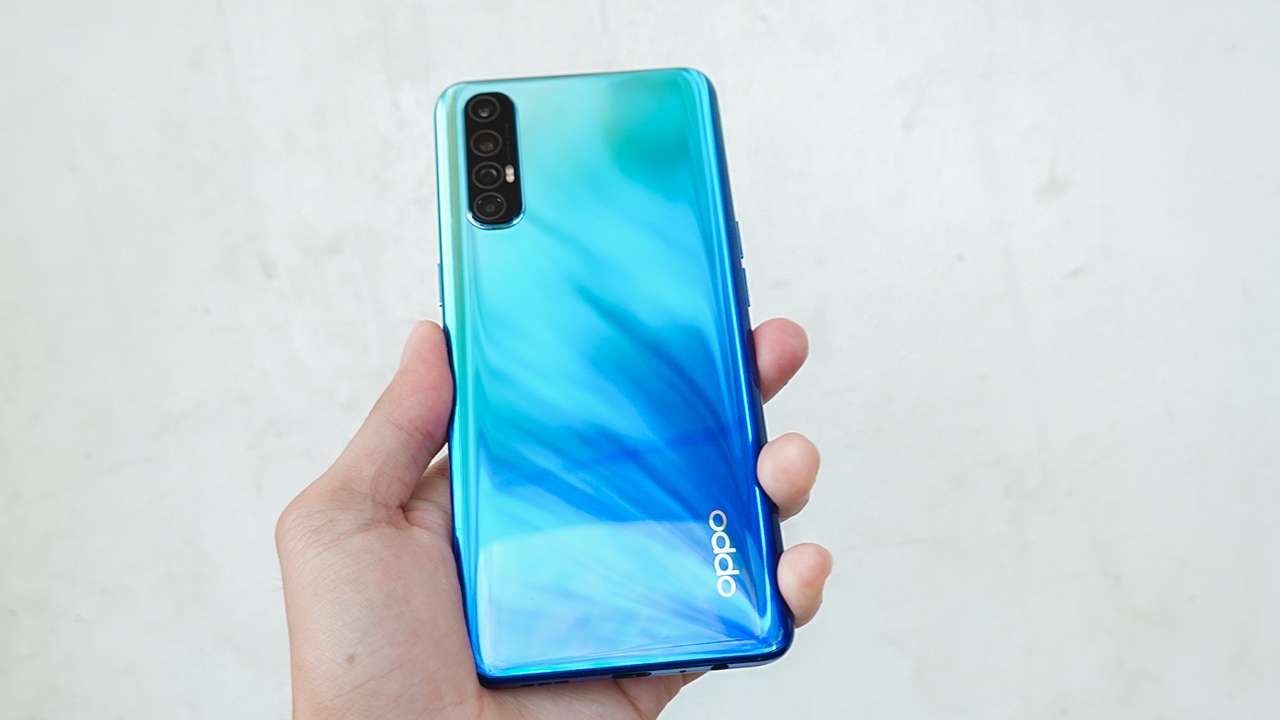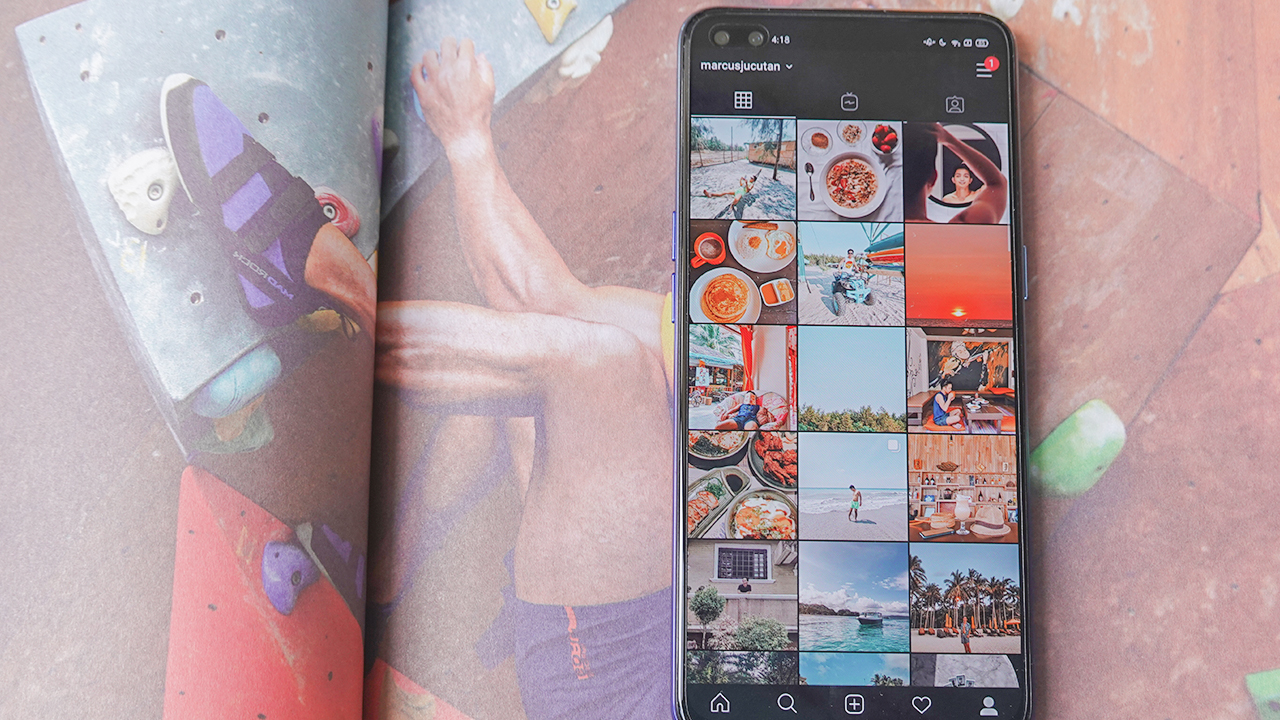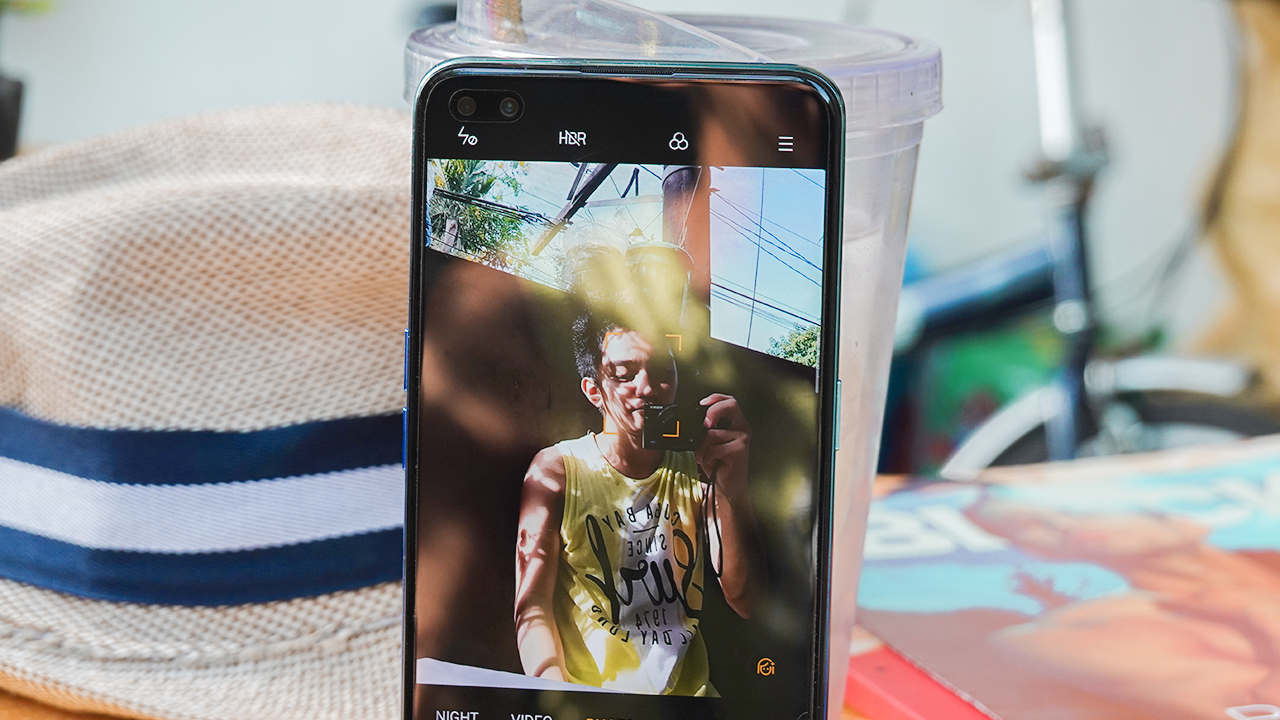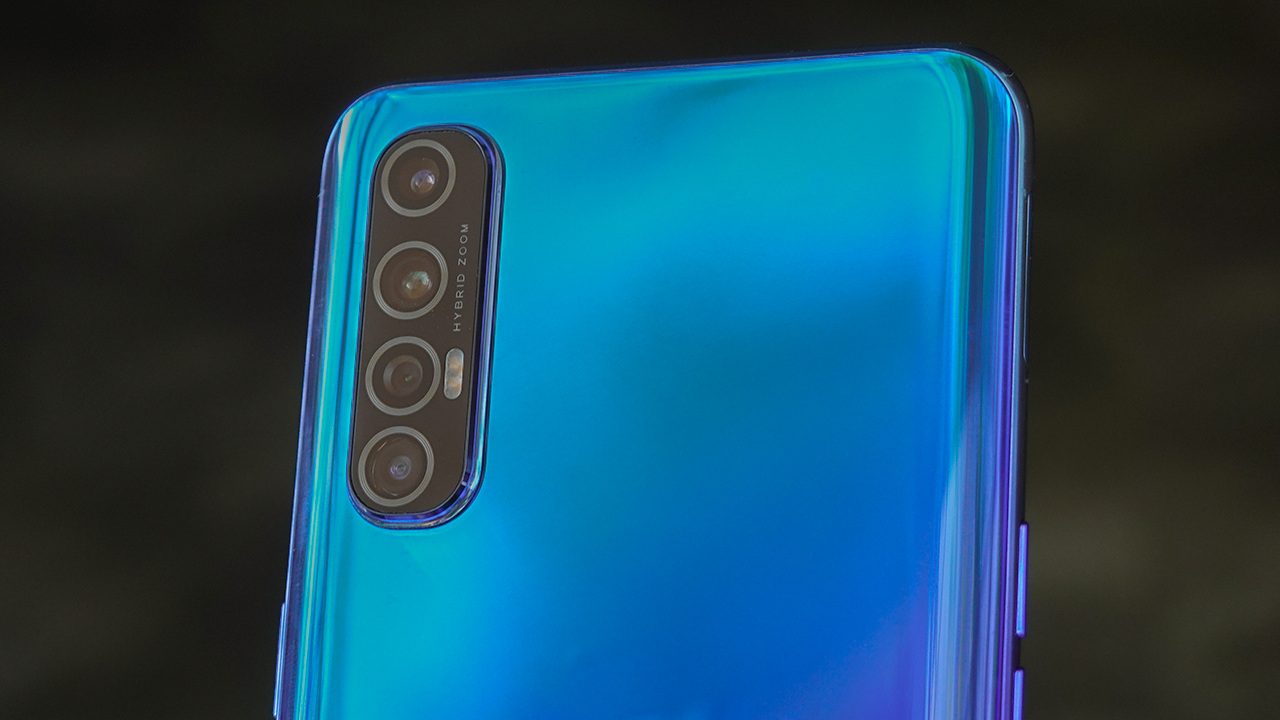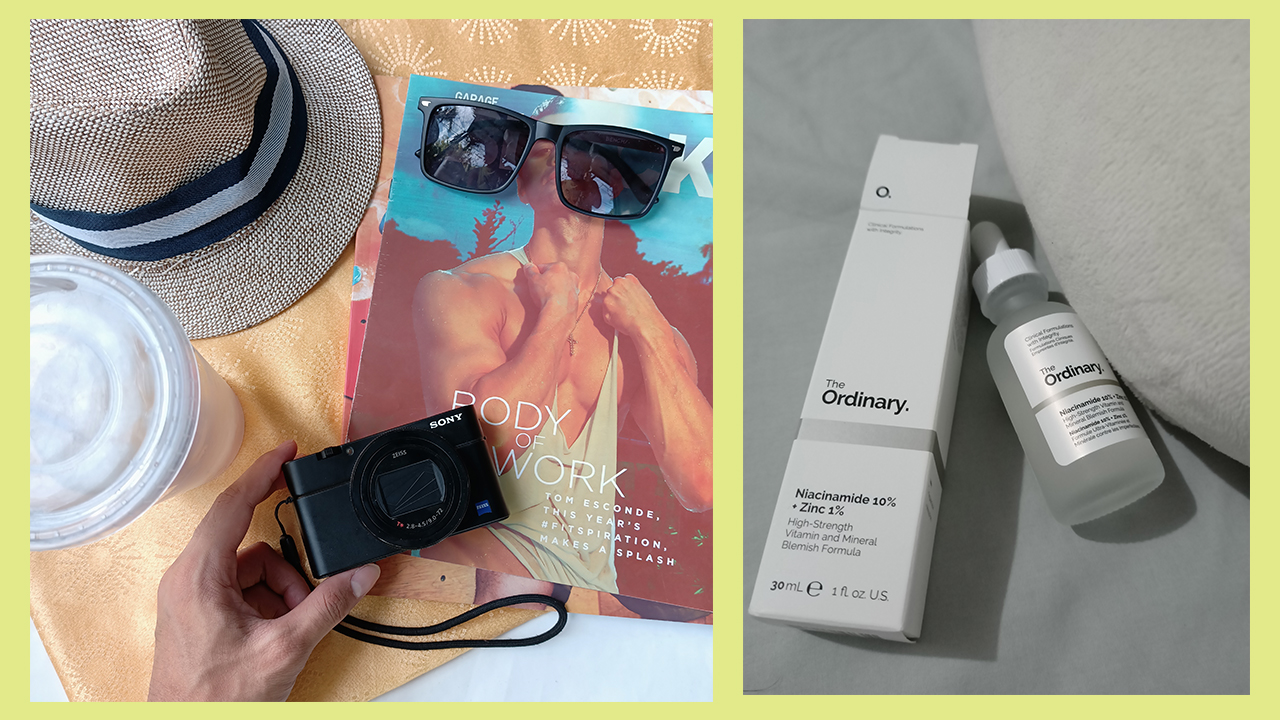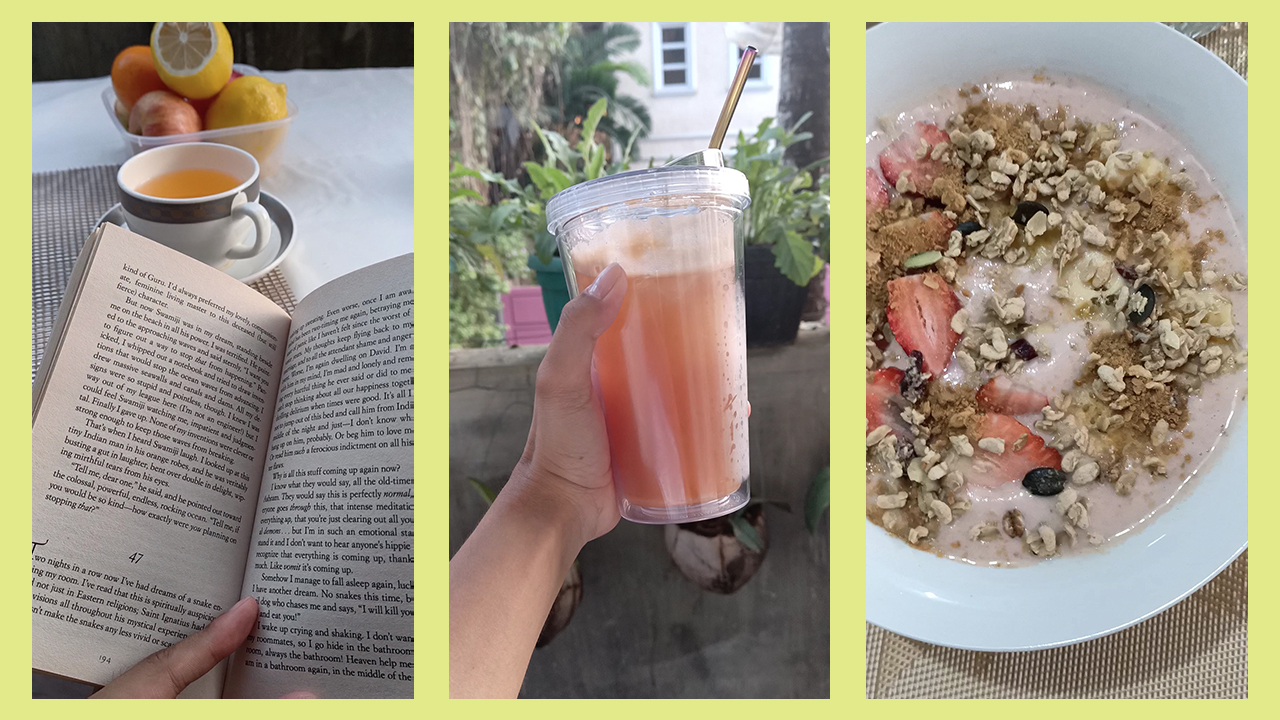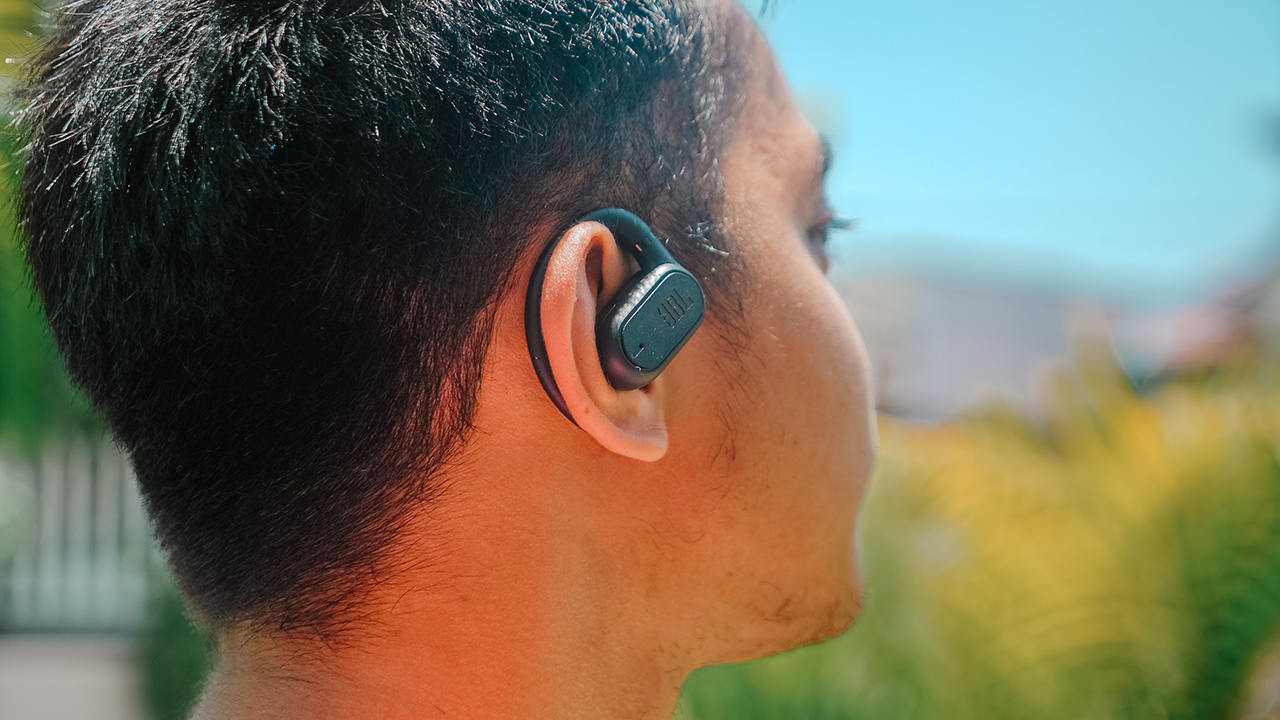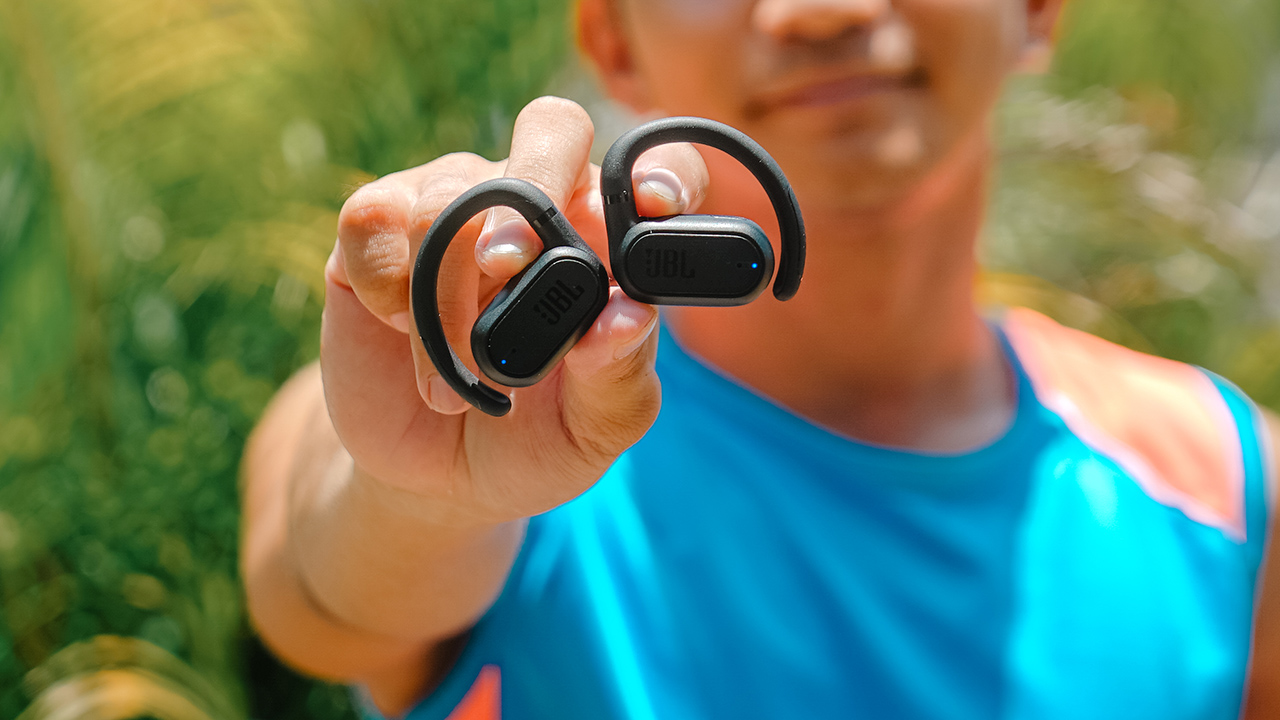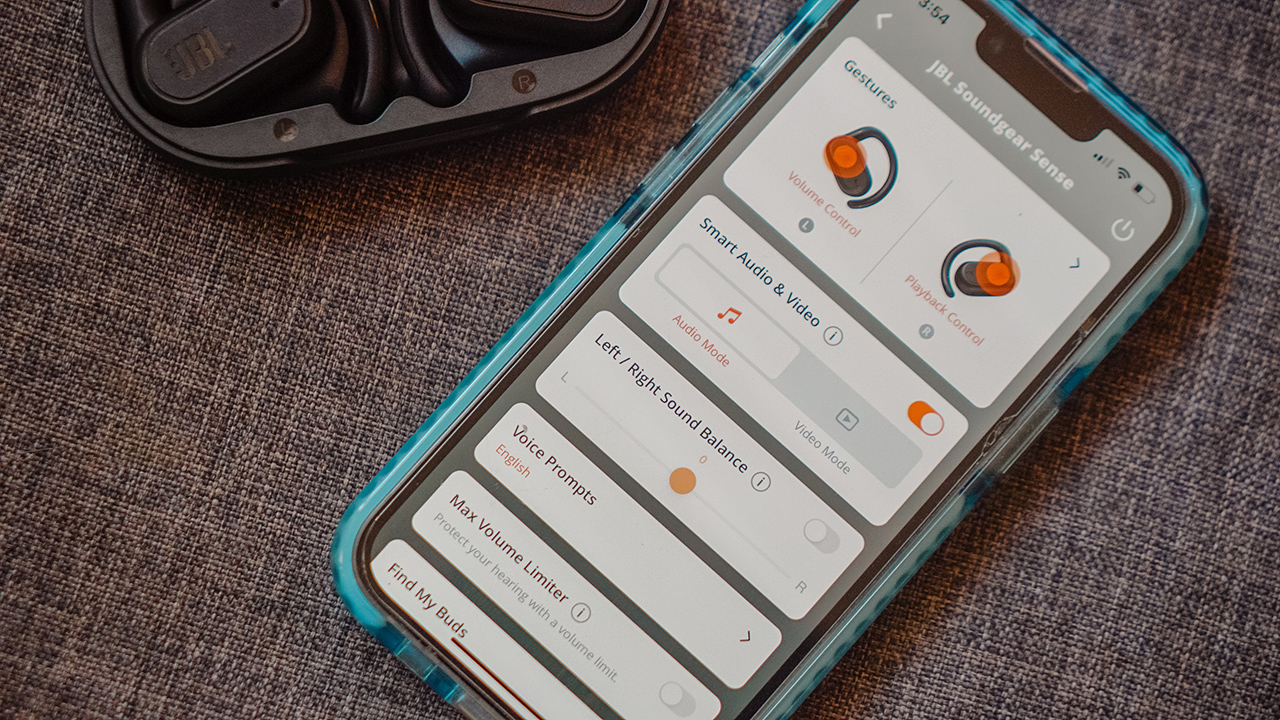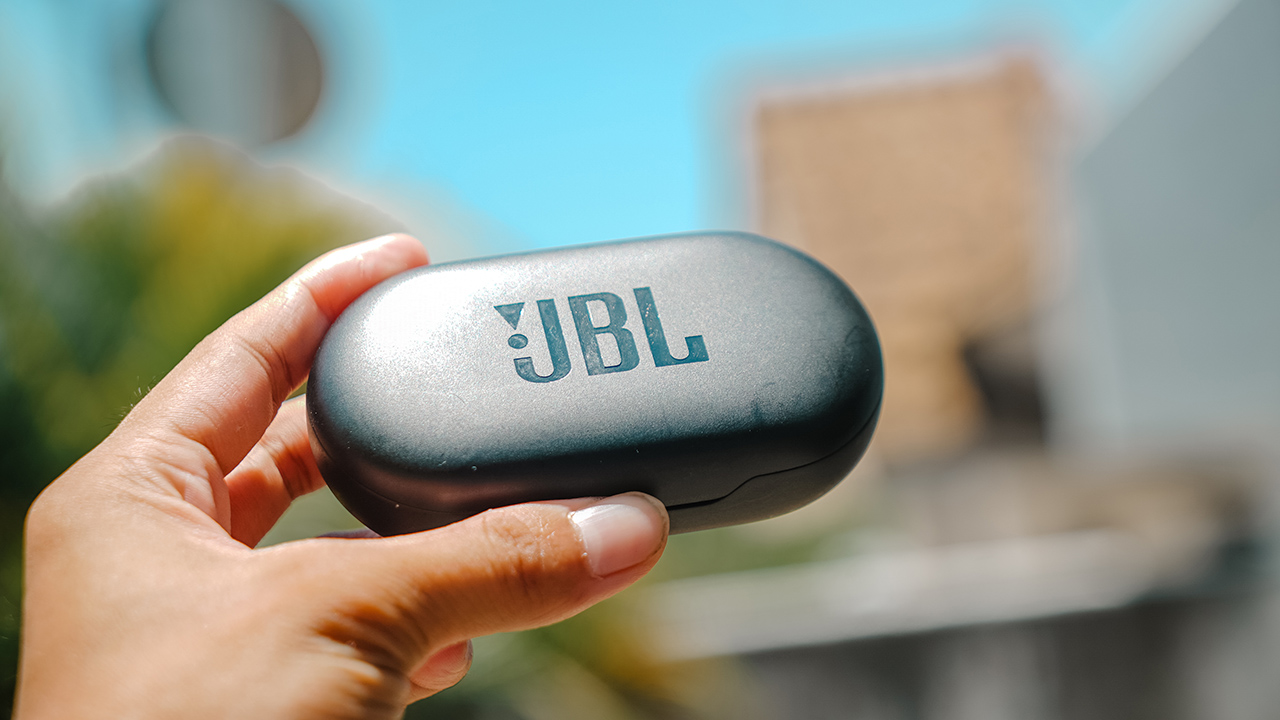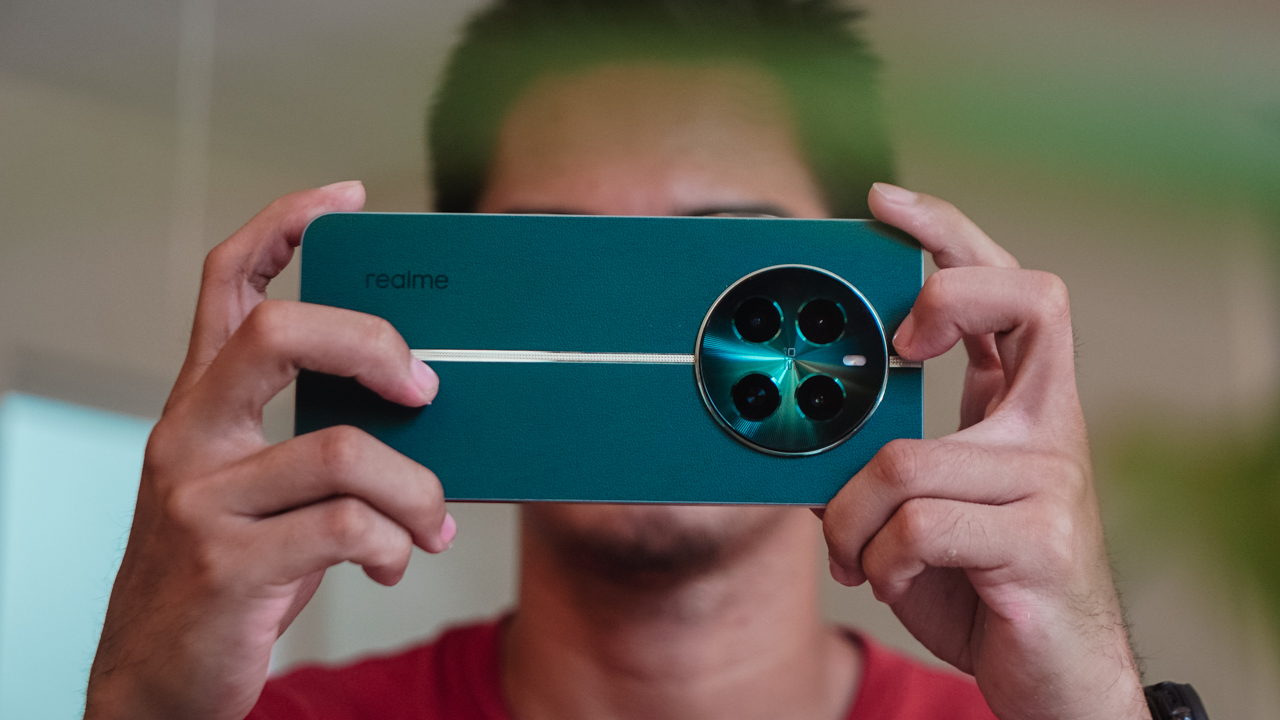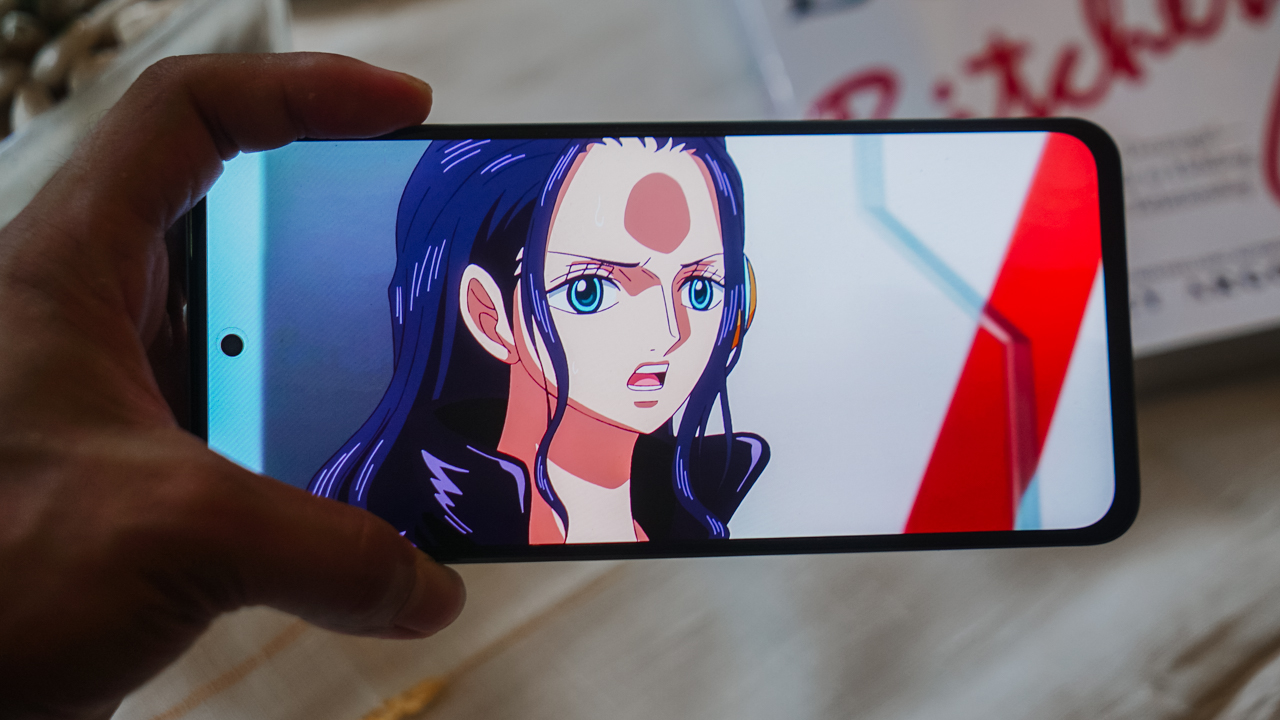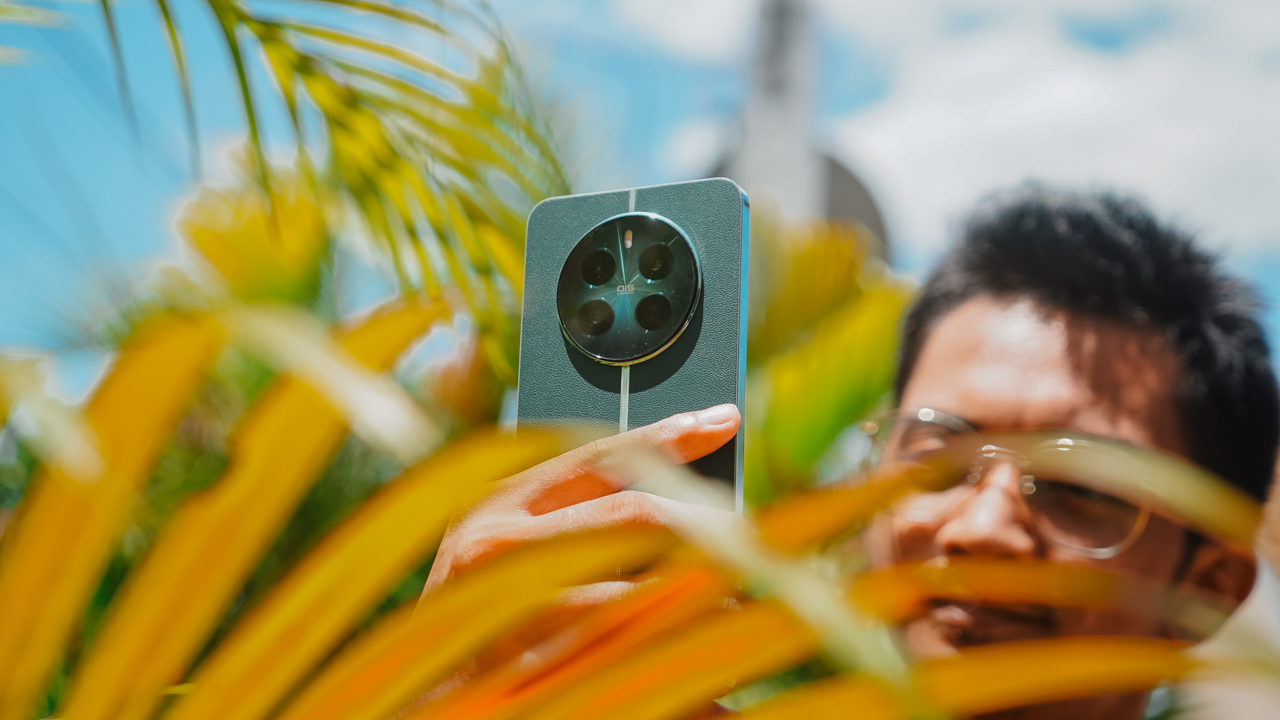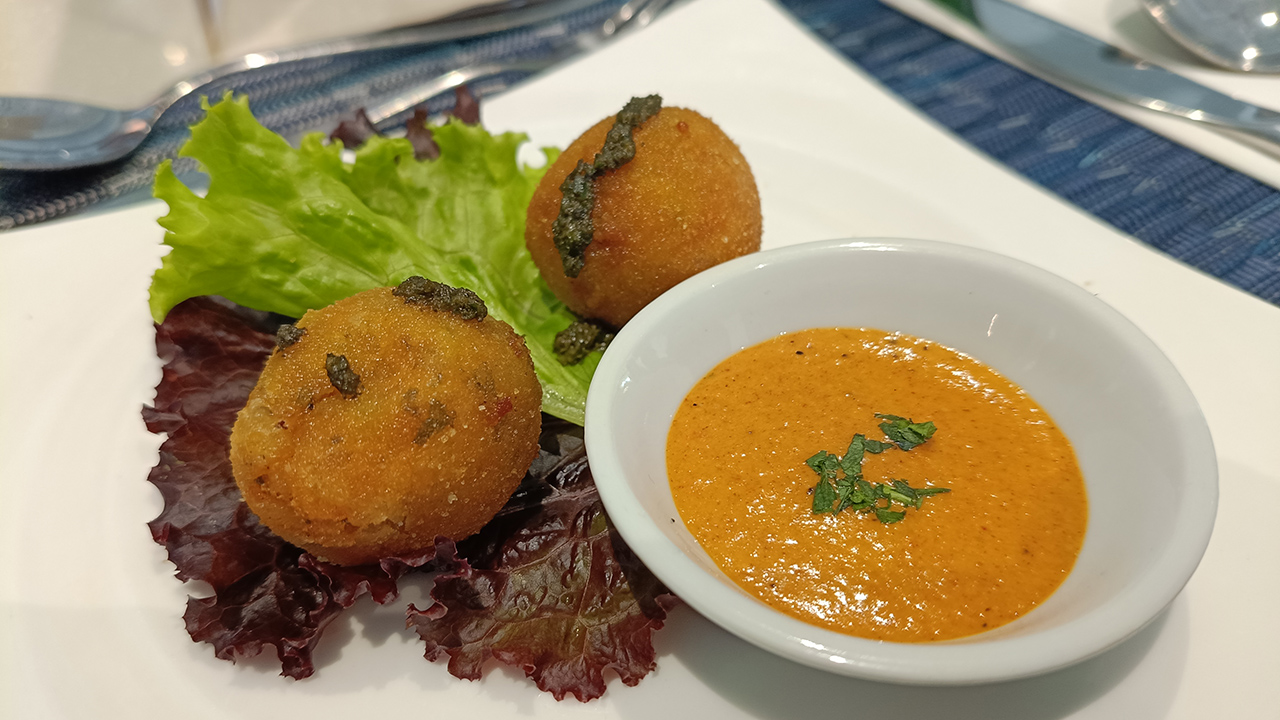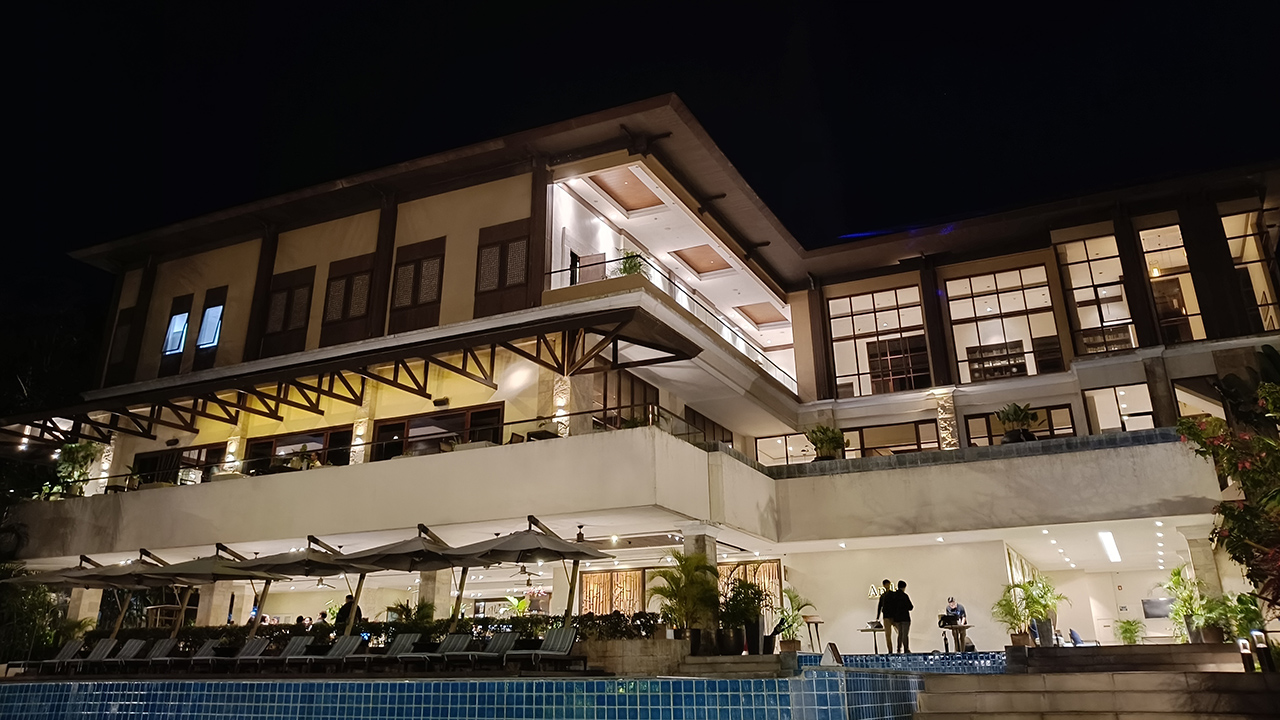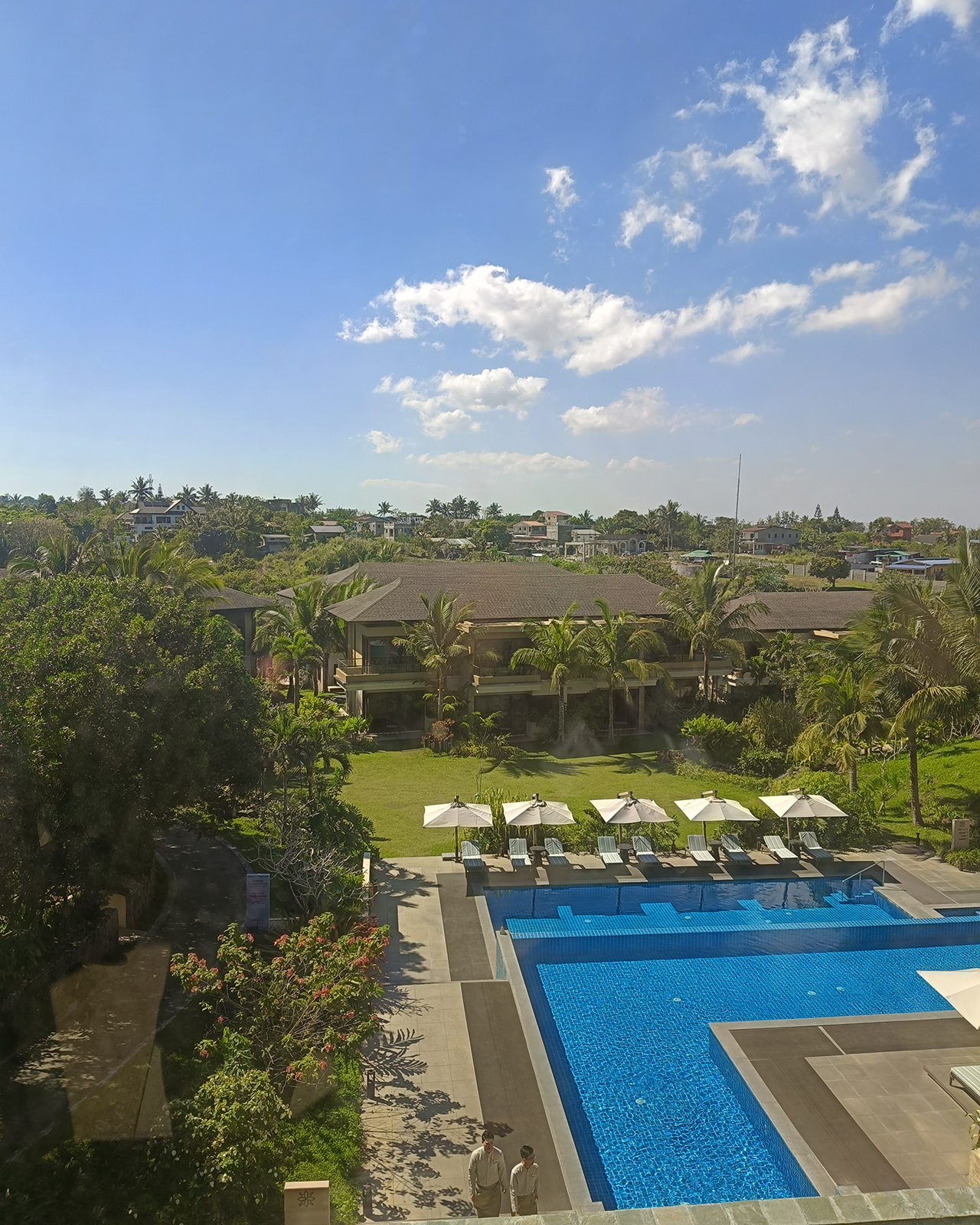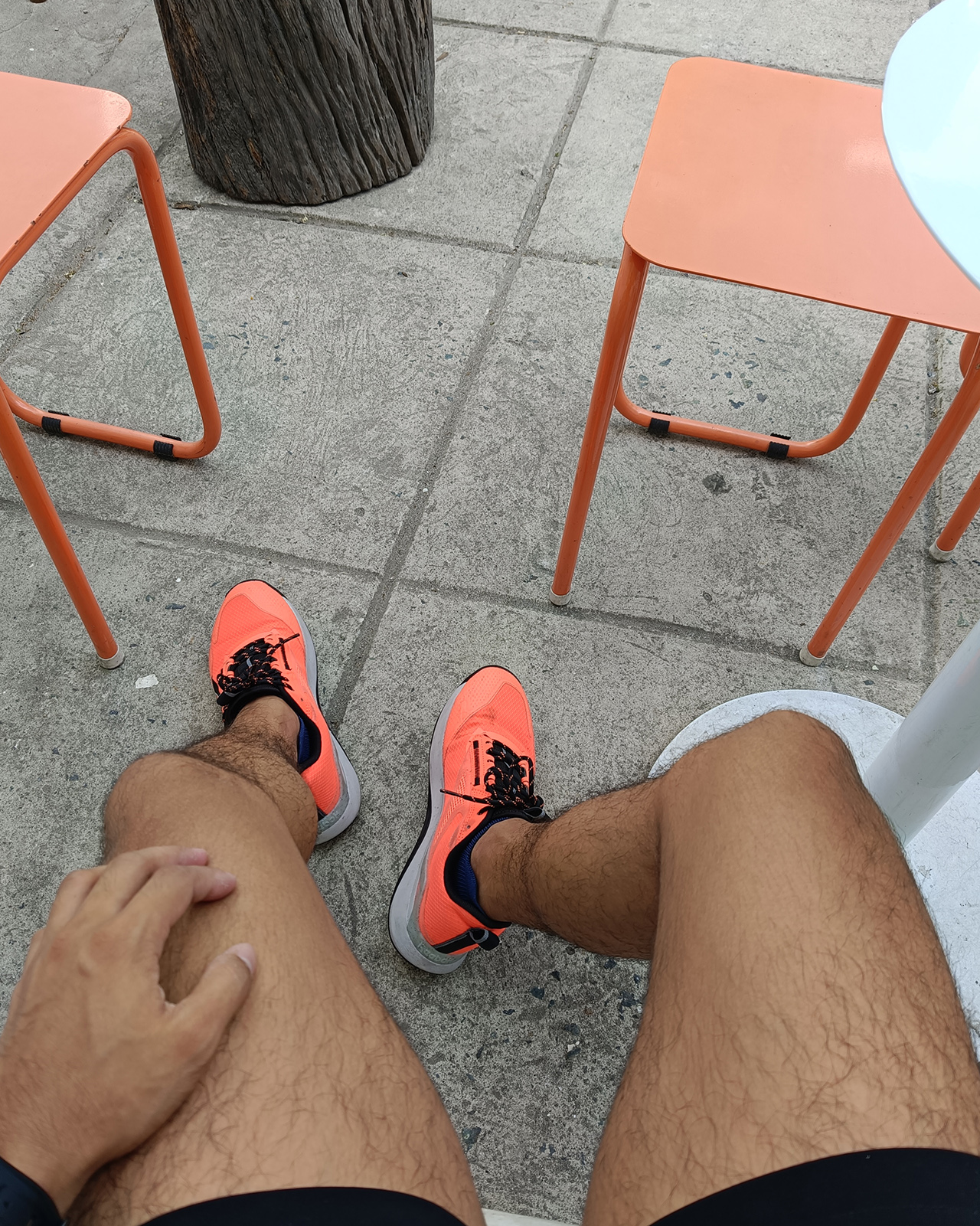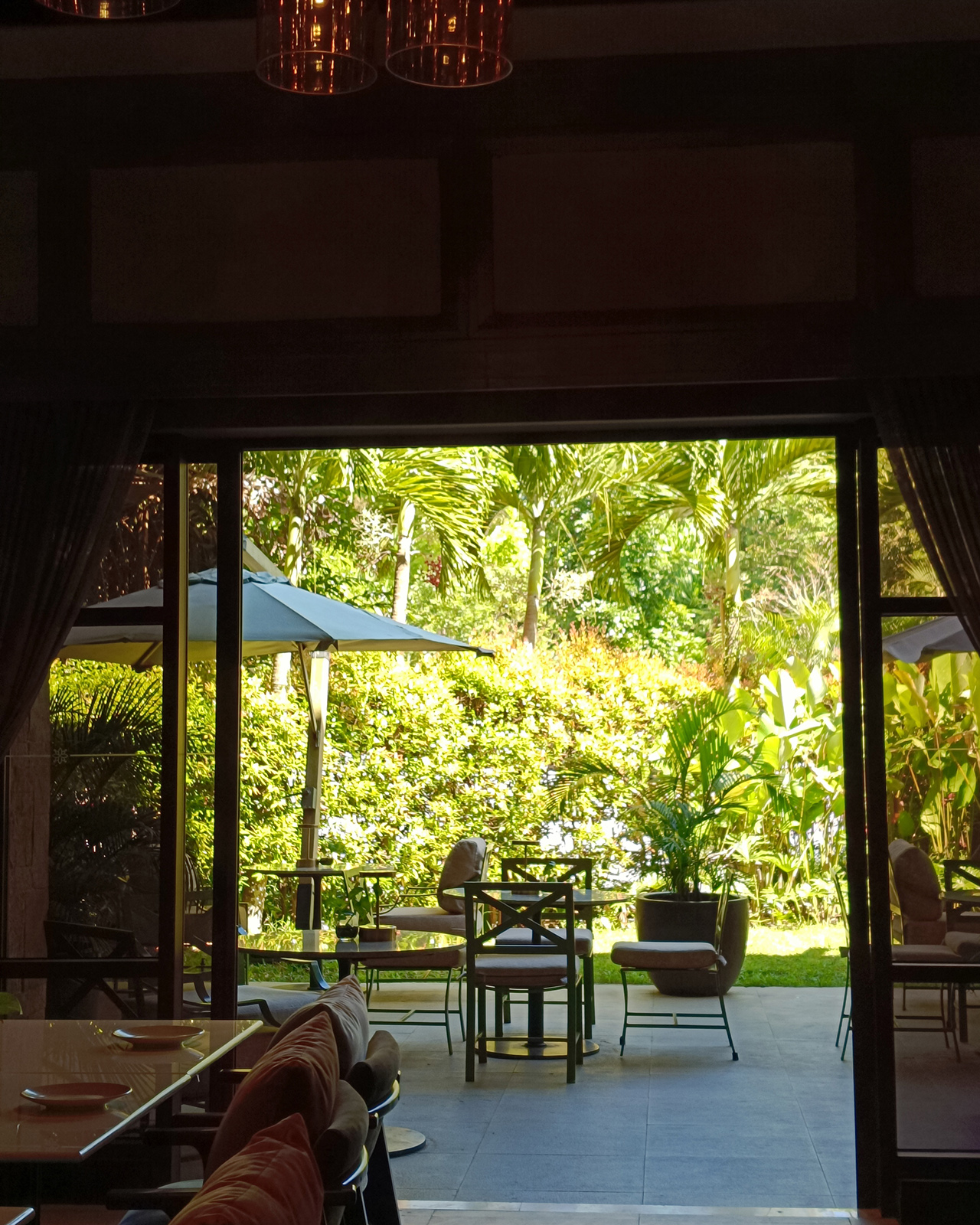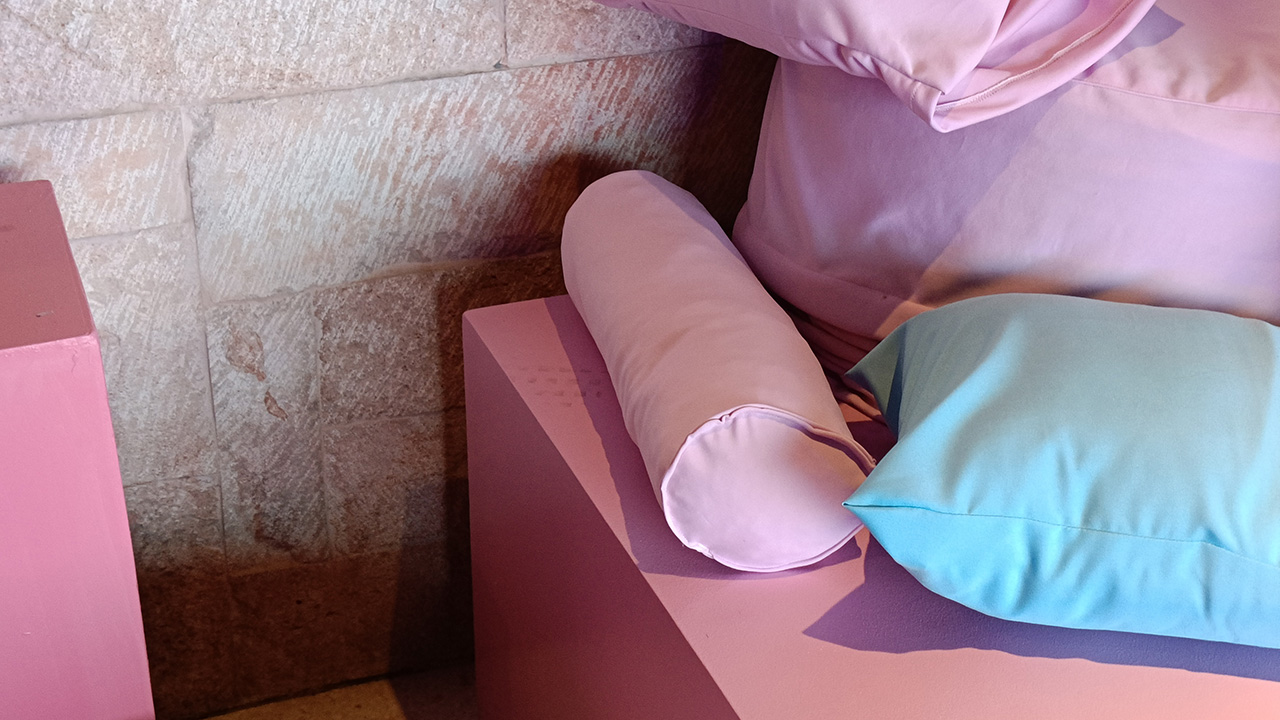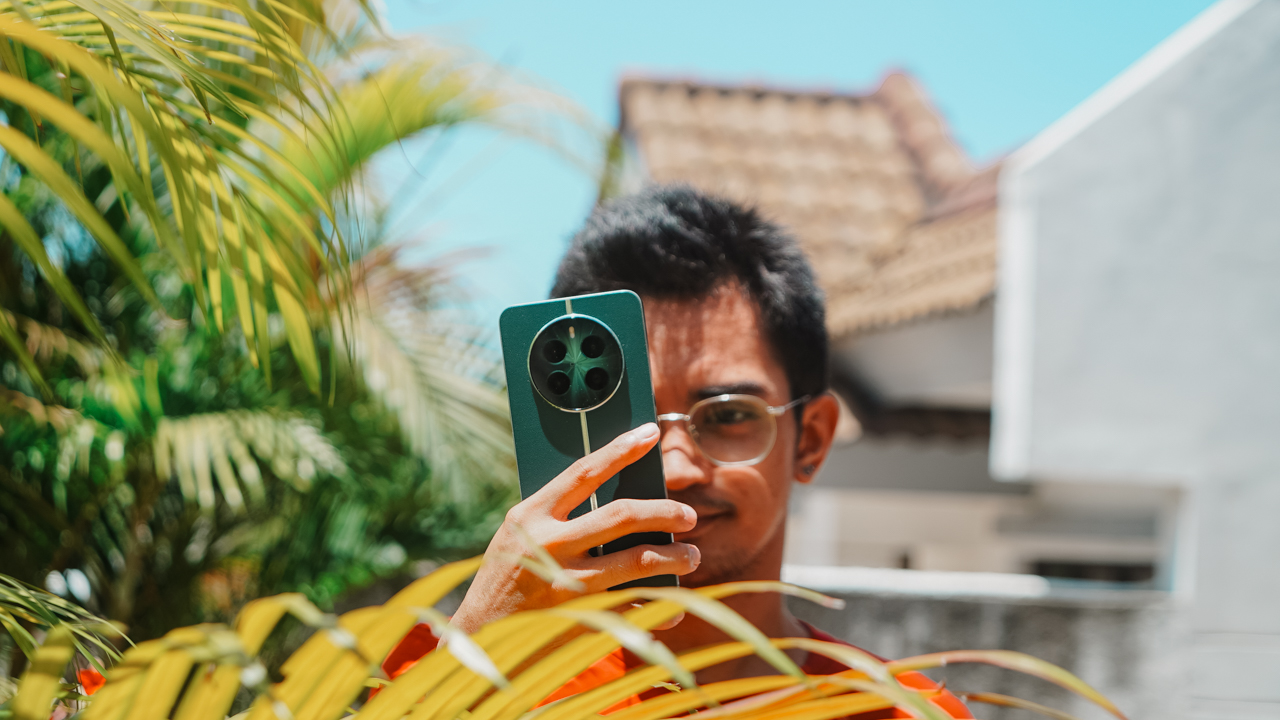

Posh, chic, and regal. That’s how I saw OPPO’s new design language when it launched the Reno, Reno 10x Zoom, and Reno2 last year. I was astounded and found a deeper appreciation for the brand. It’s as if OPPO rebranded to something befitting a stylish and upscale market.
So when OPPO introduced the Reno3 series late in December, you would think it was a plot twist meant to shock your senses and blow your mind. Unfortunately, It was disappointing.
Like déjà vu
The Reno3 Pro comes in a design that we’ve all seen before. Gradients, bold and stunning colorway, and a vertical, bumpy camera module similar to phones we’ve seen in the past few years.
While it’s refreshing to see a familiar face in a sea of stovetop- and washing machine-looking camera module designs, OPPO’s attempt was a bit disenchanting. The company failed to stick to the new design language they started. I had high hopes and I was disheartened. I should’ve never expected anything.
Despite all this, The Reno3 Pro isn’t that bad. Its lackluster design comes with a glass on its front panel, toughened by a corning Gorilla Glass. The back panel and its side frame are polycarbonates that feel like glass.
The phone is easy to grip, thanks to its curved back panel. Even though it’s big enough for my small hands, it’s still comfortable and secure to hold on to.
This particular unit I have comes in a lively colorway called Auroral Blue. Though it’s inspired by the Auroras, I find the color refreshing that it reminds me of the ocean. Particularly because I’ve been stuck at home for almost two months now. My beach trips were canceled, so I spent most of the days bathing in an inflatable pool or one hour in the shower.
Damn good screen
Another disappointment was the lack of Ingress Protection. I couldn’t fully enjoy watching Community on Netflix, or my favorite travel vlogs on YouTube while submerged in water. There’s this constant fear of dropping the phone — breaking some of its parts such as its screen and speaker.
But before you tell me how dumb I was for using a phone with no IP rating near water, let me tell you an open secret: I live my life on the edge and I like taking risks. Kidding aside, waterproof pouches and cases are useful in this situation.
Also, the screen was so damn good, it’s unfortunate if you won’t experience it in a situation you’re most comfortable at. The Reno3 Pro has a 6.4-inch Super AMOLED display, which is irresistible especially if you love binge-watching on Netflix. Its panel boasts intense brightness that I don’t even have problems using the phone even under crazy sunlight at noontime.
Moreover, its speakers were loud enough that I refused to connect it to my House of Marley wireless speakers. It’s just as loud as my Samsung Galaxy S20. Who needs a portable speaker when you have these phones as loud as megaphones?
Simple, quick, and easy-peasy
Using the OPPO Reno3 Pro was a piece of cake. With my life and my job, I’ve been accustomed to switching from one smartphone to another. This helped me determine which user-interface sucks the most, and ColorOS 7 isn’t one of them.
Navigating, customizing, and personalizing were easy, to say the least. I have to commend OPPO, ColorOS7 is definitely a step-up from previous versions. Although its swipe gestures aren’t on par with the Samsung Galaxy S20 — which is the best I’ve experienced so far.
Its button placements were a little bit confusing, too. I’m used to having the volume keys on the right, while the power button is on the left. In OPPO Reno3 Pro, it’s both on the opposite sides.
Fingerprint scanning and facial recognition were quick as well. It also has the best feature of all time: Dark mode!
The Reno3 Pro is fun to tinker with. There are nifty features you’ll enjoy exploring, and this phone is a good start if you want like tweaking things here or there. If the Reno3 Pro failed me in its aesthetics and design, it won me over with its easy-to-learn system and seamless navigation.
Performance isn’t its statement piece
If there’s one thing I don’t really like with the Reno3 Pro (aside from its design, of course), it’s the connectivity issues I encountered throughout my usage.
It takes a while to send messages on social apps like Messenger, Twitter, and Instagram. Compared to when I use the Galaxy S20 or even an older Huawei Mate 20 Pro, I find it frustrating that I had to restart the apps and the Reno3 Pro often to successfully send a message.
Although, performance isn’t really the statement piece that OPPO wears like a badge. The Reno3 Pro is running on MediaTek’s Helio P95 chipset, with 8GB RAM, and 256GB storage. With this power, I tempered my expectations so I won’t be frustrated with the frequent restarting of apps (and phone, on certain occasions). And no, having a higher ram and bigger memory doesn’t mean your phone will do well.
At the very least, it was able to run Ragnarok M: Eternal Love without lags and delays — only heating up.
Juice up on its summery heat
Playing games isn’t one of the best things you can do with the OPPO Reno3 Pro. Don’t get me wrong, the Reno3 Pro optimizes frame rate and touch sensitivity for better gameplay. I had a really great time playing with it.
It’s just difficult to hold it for a long time due to excessive heat. Additionally, the battery drains fast, especially when you play games more often.
But if you’re only using the phone to chat, make calls, scroll on social media, browse the internet, play music, and watch your favorite shows and movies, the battery will last longer than you think it would.
With 4025mAh, the fully-charged phone lasted for 11 hours before dropping to 23 percent. Assuming you use the phone just like every average user.
If you’re out of juice, you don’t have to be patient for it to fully charge. In 30-minutes, I was able to power the battery from 23 percent to 87 percent. In less than an hour, I got it to 100 percent. That VOOC Flash Charge 3.0 is real!
Best selfie phone, so far
Last but not least, it’s time to talk about OPPO’s badge of honor — its cameras. Is the Reno3 Pro the perfect phone for selfie lovers and photography enthusiasts, just like its promise? Yes and no.
The OPPO Reno3 Pro has an obtrusive, dual punch-hole front camera — housing a 44-megapixel main camera and a 2-megapixel depth of field lens.
I have no qualms about its front camera, though it applies an excessive beautification even without the AI Beauty Mode. I realized the beauty of its selfie camera when I took a selfie at a time when I look exhausted after working out and feeling careworn after a four-hour sleep.
A lot of times, OPPO receives flak for the intensive beautification. But the key is to never use the AI Beauty Mode because “too much of anything is bad for you.” Sans the beauty mode, the Reno3 Pro still lets you take beautiful selfies.
In my defense, this is how I look whenever I’m fresh from the bath, or when I’m all prepped with concealers and primer before going to work. OPPO captures the look I was going for even without applying skincare and makeup.
That’s one thing I loved, especially since this lockdown has made me follow a less-intensive skincare routine. I relied more on this phone to help me feel good about myself, unlike the iPhone 11 Pro who made me feel bad with its super-detailed selfies.
To top it off, the Reno3 Pro is perfect for selfie-takers and selfie-lovers. There’s a lot of features to play around with, as long as you don’t use its AI Beauty Mode. Promise me you won’t.
A glimpse of someone’s humdrum life
Despite having a Quadcam setup, the photos I took with the Reno3 Pro seemed like a glimpse of someone’s humdrum life. In short, it’s dull and monotonous — just like this entire lockdown.
The Reno3 Pro has a 64-megapixel main camera, 13-megapixel telephoto lens, 8-megapixel ultra wide-angle lens, and a 2-megapixel mono lens. It’s also capable of 5x Hybrid Zoom and 20x Digital Zoom.
Honestly, I had more fun playing with the rear cameras for videos than photos. Though the videos I shot were a bit desaturated, I find it easier to color grade since it looks flat and dreary. Here’s a glimpse of my quarantine life, as told by the Reno3 Pro.
View this post on Instagram
Is this your GadgetMatch?
The OPPO Reno3 felt like a step back after seeing the marvelous Reno 10x Zoom and Reno2. For an upper midrange phone, there are other alternatives that can outclass the Reno3 Pro. It’s only a matter of preference and how you’re going to use the phone.
For what it’s worth, the Reno3 Pro is a good all-around phone for those who want to get things done. Those who’d love to have a bit of everything: Balanced power and speed, enough juice, awesome display, great selfies, decent shots, and be able to play every once in a while. Nothing excessive, but not entirely lacking.
The Reno3 Pro is available in Auroral Blue and Midnight Black. In Singapore, it retails for SG$ 749 (US$ 525) while in the Philippines, it retails for PhP 28,990 (US$ 575). It’s officially available through OPPO concept stores nationwide, e-commerce partners, and Smart via postpaid plans.
SEE ALSO: Content creator switches from iPhone 6s to OPPO Reno3 | OPPO Reno3 series pricing and availability in the Philippines

Reviews
Challengers review: A thrilling drama wrapped as a tennis anime
Catch it in Ayala Cinemas starting April 24th

Tennis is more than just hitting a ball really hard with a racquet. There are player tics, serving techniques, mind games, and, of course, drama off the court. Challengers, starring Zendaya, takes the entire game and turns it into a dramatic thriller worthy of Wimbledon.
In Challengers, Art Donaldson (Mike Faist) is an aging tennis superstar desperate for one more big win. His wife Tashi (Zendaya), a retired tennis star in her own right, does everything to coach Art back to his winning ways. Opposite them is Patrick Zweig, a former-friend-turned-rival, facing Art in the final match of a Challenger.
As premises go, Challengers seemingly presents a straightforward sports drama. It’s a simple one-versus-one, after all. However, the film’s 2-hour-plus runtime hides a more complex drama.
The second-strangest ménage à trois in film
The film starts in media res: the first set of the final match. It doesn’t tell you who Art, Patrick, or Tashi is. It’s just a friendly match. There are, however, questions abound. Why is Zendaya’s character looking intently at one of the players? Why is the other player concerned that she is looking at his rival and not him? Who are these people?
Before you can ponder each question, the film takes you through multiple time jumps. The earliest (and longest) of which — thirteen years ago — sets up the story. Art and Patrick are two best friends and tennis prodigies teaming up to decimate the competition at their school. Everything changes when the two friends catch a match of another young prodigy, Tashi Duncan.
Both friends engage in a friendly competition to see who can successfully flirt with her. The sequence ends in the second-strangest ménage à trois committed to film. (To see the strangest one, catch Alfonso Cuarón’s Y tu mamá también, a clear inspiration to Challengers.)
The time jumps don’t end there. The story quickly volleys back and forth between different times in the past and the present, including years, months, weeks, and even hours ago. Sometimes, the skips result in the cinematic equivalent of whiplash from watching a tennis ball rapidly travel from left to right. But if you just follow the ball, it ends with one of the most thrilling, edge-of-your-seat dramas this year.
Blink and you’ll miss it
Despite how creative the time skips already are, Challengers shines with its subtler elements: the tiny movements, the tics that seasoned sports watchers can catch. Much like how a play-by-play commentator directs a viewer’s attention to what makes a player tick, the film subtly shows you elements of an even deeper story that it may or may not expound on.
Early on, Challengers shows a blink-and-you’ll-miss-it scene featuring Tashi’s knees. If you weren’t paying attention, you might have missed a scar from a surgical incision, hinting at why Tashi retired from the sport.
In that particular example, the film does dwell on it a bit in a past flashback. However, there are plot points that the film just drops on audiences with nary an explanation. For example, you might see telltale injection marks up Patrick’s wrist or a short-but-telling rehab session for Art. The film drops these nuggets only for the viewer to ponder. They’re short, but they paint a compelling picture to complement the action on the court.
It’s a tennis anime
In essence, Challengers is just about a tennis match between two emboldened competitors. However, like an anime battle that takes ten episodes to resolve, the film understands that the sport is not just about results: it’s about all the tiny movements, strategies, and dramas. If Wimbledon was this thrilling all the time, I should probably tune in a lot more.
Challengers shows exclusively in Ayala Cinemas starting April 24th.
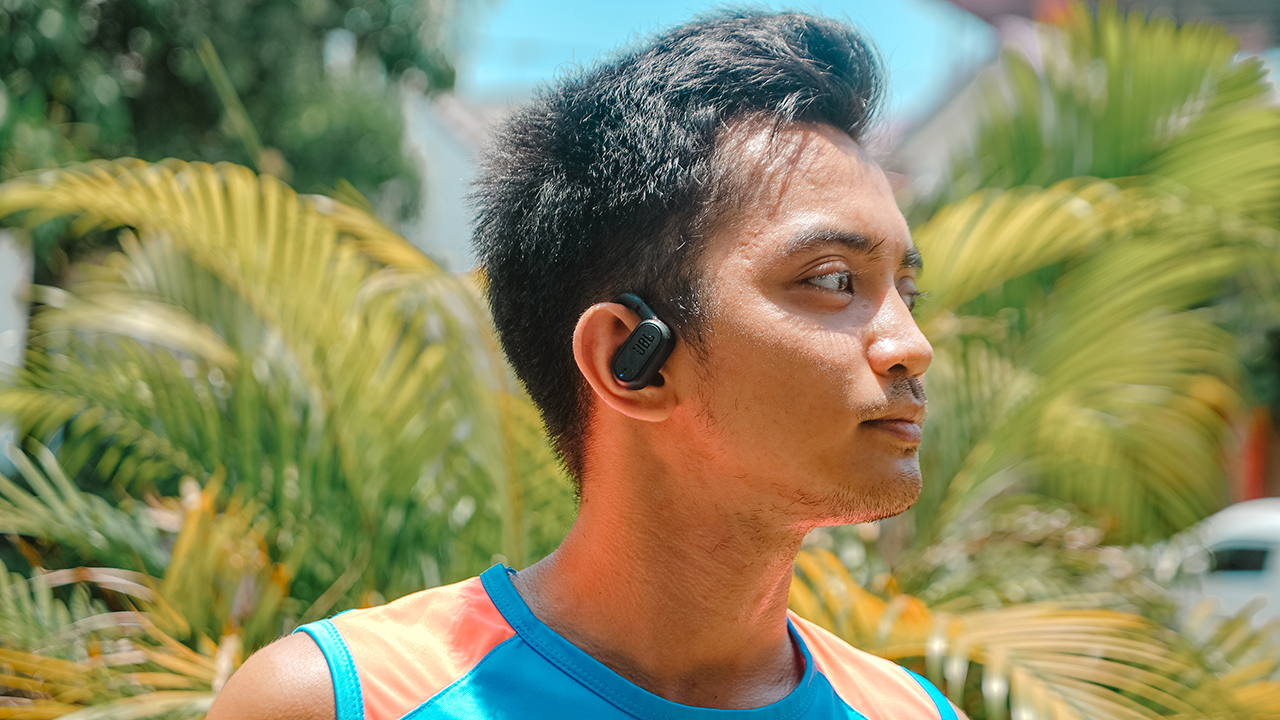
Running has been a form of meditation for most people. To some, it’s a time where your mind goes blank, allowing you to have a break from your stimulated mind.
For others, like yours truly, it’s a moment to sort out thoughts and emotions after having a preoccupied day. A common denominator between runners is doing the activity alone, accompanied only by their smartwatches, a hydration flask, and good music.
I’ve been using true wireless earbuds to accompany me on my runs, but the advent of JBL Soundgear Sense piqued my curiosity.
What is it like to use open-ear headphones when out for a run? To find the answers, I used the Soundgear Sense during my ongoing race season.
Take the long way home
As I put on mileage for my upcoming races, I have been required by my coach to add more slow runs to improve my aerobic base. That entails long, boring runs for an hour or two.
Imagine the agony of finishing a minimum of 10-kilometers by relying on your heart rate and not your pace. That was when I sought solace from the JBL Soundgear Sense.
I didn’t realize that having open-ear headphones would allow me to take on scenic and busy routes without worry that a car might hit me.
Unlike when I use true wireless earbuds that fit snugly in my ears, the Soundgear Sense are hooked and clipped on the curve of my ears without covering the ear canal.
This allowed me to hear my surroundings while still enjoying my favorite songs from Taylor Swift and BINI, a rising P-pop girl group.
Open but still private
Even if the Soundgear Sense has an open-ear design, rest assured that there’s zero sound leakage. JBL’s OpenSound technology made sure that the sound pressure is directed through waves towards the ears, while also reducing sound dispersion.
There’s a certain shame in having people find out whom you’re listening to. Maybe because you don’t intend to share the music you’re enjoying. But if you opt to share your jam, might as well have a Bluetooth speaker, right?
That’s why I liked the idea of keeping it open but still private — in relationships and my wearable. I get to enjoy “Pantropiko” and “Salamin, Salamin” by BINI all by lonesome, while still attuned to my surroundings.
It also helps that each earbud has a 16.2mm driver with a unique bass-enhancing algorithm. The sound allowed me to immerse myself in the songs I was playing, but still aware of the external noises of the streets. Somehow, the Soundgear Sense felt like a second, inner voice whispering thoughts through music.
Hybrid design for hybrid athletes
I don’t just run. I also lift on the same day right after running. Being a hybrid athlete allows me to prepare my body from the demands of multi-sports training and partaking on a Spartan race.
I like how the Soundgear Sense has a hybrid design that makes it apt for different type of workouts. Its adjustable earhooks are clipped perfectly, which doesn’t fall off even when I’m doing plyometrics. It’s also steadily in place even if I sprint and/or do some speed training.
Even when I’m heavily sweating, the Soundgear Sense didn’t slip off. With an IP54 rating, it’s dust-, splash-, and sweat-resistant.
Also, the way it’s designed is secured to fit on whatever activities you have, regardless of sweating. Except gymnastics and parkour, though.
The Soundgear Sense might fall off after you hang or flip from those extreme activities that require being suspended in the air.
For added security, there’s an included neckband inside the box. However, I hate having something dangling on my nape so I never used it.
Moreover, I couldn’t last more than an hour having it clipped even with a supposed hybrid design. It hurts my ears eventually, and I feel like someone was pinching my ears and I couldn’t do anything.
If I have runs for more than an hour, I’d opt not wearing both earbuds.
Easy connectivity
One thing I like about JBL is how easy it is to connect your wearables to your smartphones, be it an iPhone or an Android.
Once both devices are paired, flipping open the case will instantly connect the Soundgear Sense to your smartphone.
While running, I don’t have to constantly check my phone since the Soundgear Sense, along with my Garmin epix Pro (Gen 2), helps me stay connected. With just a single flick on the earbud, I can control my music, volume, and calls.
My friend, Betty, called me one time while I was out for an easy run and she barely realized I was running until I gasped for my breath when running on a steep incline. It’s convenient to have crisp and crystal-clear calls within your reach.
And to make it more convenient, the touch controls can be personalized to your liking. On the left earbud, it’s usually the volume control.
One tap and it increases the volume, while double tapping decreases it. When someone calls, you can double tap to respond or you can tap and hold to reject the call.
The right earbud uses the same call control, but it’s automatically set for playback control. You can switch earbuds depending on the gesture you prefer.
All of these customizations can be done using the My JBL Headphones app.
Definitely long lasting
I have had the Soundgear Sense for two weeks now, and both earbuds still have a half battery life from a single charge. As of writing, the left earbud still has 51% while the right earbud has 56%.
Thanks to its charging case, both earbuds keep recharging every time they’re stowed inside.
But if you’re wondering why the left earbud has a lower battery life, it’s not because I spend too much time watching adult-rated content.
A lot of times, I run with just the left earbud clipped on my ear to stay alert from my surroundings. Even with OpenSound technology, I tend to get lost in the music I’m listening to whenever I have both earbuds hooked.
Considering I’ve amassed more than 70km of running mileage for two weeks with almost 10 hours of running, the Soundgear Sense surprised me with its battery life.
I haven’t charged it since then, which made me wonder how fast it would really be, if I get to drain it down to zero and juice it back up to 100. Perhaps, stay tuned on my Instagram and TikTok accounts?
The Soundgear Sense is expected to let you listen wirelessly for up to 6 hours. You get an extended life of another 18 hours through the charging case. A quick 15-minute charge through the Type-C port gives an additional 4 hours of music.
Is this your GadgetMatch?
For an athlete, the JBL Soundgear Sense surely makes every run magical. The design and technology were innovated with runners in mind. The device integrates seamlessly to any type of active lifestyle.
It will boil down to preference, whether you enjoy an open-ear design clipped onto your ears or you’d enjoy an earbud blocking your ear canal.
As for me, I think I’ll switch and pick the Soundgear Sense to accompany me in my race season. It helps me immerse myself in good music, stay connected, while keeping me attuned to my surroundings. This ensures my safety when out for a run.
It’s easily a GadgetMatch for all types of athletes dedicated to fulfilling their training assignments. It’s also for fitness enthusiasts entering their “runnerist” era.
The JBL Soundgear Sense retails for PhP 9,499. It is available via JBL’s website and select, authorized retailers.
Reviews
realme 12+ 5G review: One month later
What is it like to spend a month with a midrange smartphone?

What is it like to spend a month with a midrange smartphone?
For someone spoiled with high-end, flagship smartphones, a watered-down experience terrifies me. I couldn’t fathom using just a midrange smartphone, even if I’m counted as a casual user.
But spending a month with the realme 12+ 5G gave me a new perspective on what midrange smartphones at 2024 can do.
Powerhouse at a fraction
A lot of times, I’ve used the realme 12+ 5G to play Mobile Legends: Bang Bang. I know, I know. It’s 2024 and I’m still playing the same old MOBA but it’s a game I know all too well that helps me de-stress after a long day.
See, I’m an athlete balancing my work and life. Sometimes, I just want to rot in bed while playing on my phone.
The realme 12+ 5G helped keep me sane thanks to its lag-free gameplay. Not once did I feel any heat or slowing down even while playing in an Ultra Graphics and Super High Frame Rate setting.
The Vapor Chamber Cooling System came into play, dissipating the heat so even if under heavy usage, the gameplay is still optimal.
Moreover, the realme 12+ 5G uses a MediaTek Dimensity 7050 chipset. When you combine this with a 12GB dynamic ram that’s expandable through your storage space, you won’t have to worry about a watered-down experience from using a midrange device.
The RAM can take up from 4GB up to 12GB to be re-allocated from the 256GB internal storage. Though, I only used 4GB since I didn’t feel the need to turn it up to the highest configuration. It’s already smooth even when multi-tasking.
It may not be as smooth as the flagship smartphones I held, but it’s enough particularly for people who just needs a smartphone they can use for their everyday lives. However, if you want a midrange device dedicated for an even more intensive gameplay, I’d suggest looking elsewhere.
Daily companion for viewing, listening
When I was on my way home from my training, I drove past a busy road in Pasig City where vendors are in the streets, bystanders are frolicking, and loafers gossip while taking space through the plastic stools they sat on spread out near the sidewalk.
What do they have in common? Smartphones. There was a realization that the Filipino masses rely on their devices to be entertained and connected.
I have a feeling that if I wasn’t a multi-passionate person with an insanely hectic schedule, I’d bury my head on a smartphone, too.
This is where having a spectacular audio-visual performance comes into play, especially for budget and midrange devices. Luckily, the realme 12+ 5G has a 120HZ Super AMOLED Display and Dual Stereo Speakers.
It’s one of the reasons why I started playing Mobile Legends: Bang Bang again when I was decompressing for the day.
Aside from doomscrolling on TikTok, I just like it when the display is fluid, vivid, and smooth while the audio can be as loud and immersive. Unlike most midrange smartphones, the audio-visual performance is always a hit or miss.
Sometimes, they have an excellent screen while the audio suffers, or vice-versa. The realme 12+ 5G just have it both.
Capture it, remember it
The realme 12+ 5G uses a 50-megapixel SonyLYT 600 OIS Portrait Camera, an 8-megapixel 112° wide-angle lens, a 2-megapixel macro sensor, and a 16-megapixel selfie camera on the front.
I used the smartphone to capture photos I send to my loved ones. From selfies, coffee runs, hotel visits, group photos, food shots, and just anything and everything in my life.
The quality for low-light shots is a hit or miss, but for photos taken during daytime and with good lighting? It’s just spectacular.
Here are some sample photos to look at:
Portraits & Selfies
Food
Sceneries
Everyday photos
Real on reliability
The realme 12+ 5G’s battery capacity is just *chef’s kiss*.
Its ability to retain its battery life even on standby is just incredibly helpful for someone who keeps forgetting to charge his devices.
The realme 12+ 5G lasts long enough when out for the day, and even if you spend a lot of hours playing games and doomscrolling.
One time, I played Mobile Legends: Bang Bang for three hours straight from a full charge, and I still had enough juice to keep playing. That 5000mAh battery surely is a lot of juice that doesn’t drain easily. I had to be the one to give up playing since it hurt my eyes already.
Charging it with 67W SuperVOOC, the realme 12+ 5G gets full charge in less than an hour. This is why even if I forget to charge it at night, I just have to plug the charger in the USB-C port while I was taking a bath and prepping for work.
Could’ve been a real premium
Aside from its performance and capabilities, the realme 12+ 5G comes with a strong and beautiful exterior. The unit I have came in Pioneer Green, resembling an emerald-touch of old money.
Without a plastic case, it’s soft, feels luxurious, and easy to hold even with a boxy frame. At a glance, it’s even more beautiful with its luxury watch-inspired design, thanks to designer Ollivier Savéo.
For a midrange device, realme has a knack for making its devices look and feel sophisticated. Furthermore, it’s dust and splash proof with its IP54 rating. It’s a win-win, right? Strong and pretty at the same time.
My only issue would be the realme UI 5.0 based on Android 14 that’s packed with bloatware. Look- and feel-wise, the realme 12+ 5G would be a premium stunner, even with its camera, audio-visual, and battery performance.
But the UI design along with the unnecessary bloatware made it cheap and annoying to look at.
Is this your GadgetMatch?
The realme 12+ 5G delivers what you’d expect out of a midrange smartphone. It’s premium-looking, long-lasting, offers reliable performance, and captures vivid portraits and pictures.
It’s easily a GadgetMatch for casual users requiring enough power and juice on a device that looks pretty and strong. If the realme 12 Pro+ 5G is a midrange marvel, consider the realme 12+ 5G almost the same, but at a lesser cost.
It retails for PhP 19,999 for the 12GB+256GB variant, while the 8GB+256GB unit is priced at PhP 17,999.
-

 Accessories2 weeks ago
Accessories2 weeks agoApple Vision Pro Review: Two Months Later
-

 Features5 days ago
Features5 days agoFortify your home office or business setup with these devices
-

 Gaming1 week ago
Gaming1 week agoThe Rogue Prince of Persia looks like an ultra-colorful roguelite
-
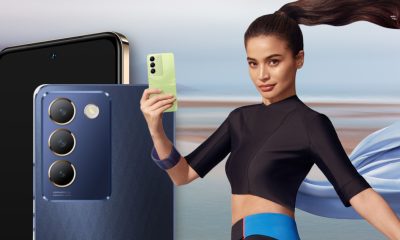
 Philippines2 weeks ago
Philippines2 weeks agovivo Y100 to release in Philippines on April 27
-

 Gaming1 week ago
Gaming1 week agoStar Wars Outlaws release date revealed
-

 Events1 week ago
Events1 week agoStellar Blade: PlayStation taps cosplayers to play Eve for game’s launch
-

 Accessories1 week ago
Accessories1 week agoLogitech unveils G Pro X 60 gaming keyboard: Price, details
-

 Deals2 weeks ago
Deals2 weeks agoSamsung Awesome April: Deals on Galaxy A series



